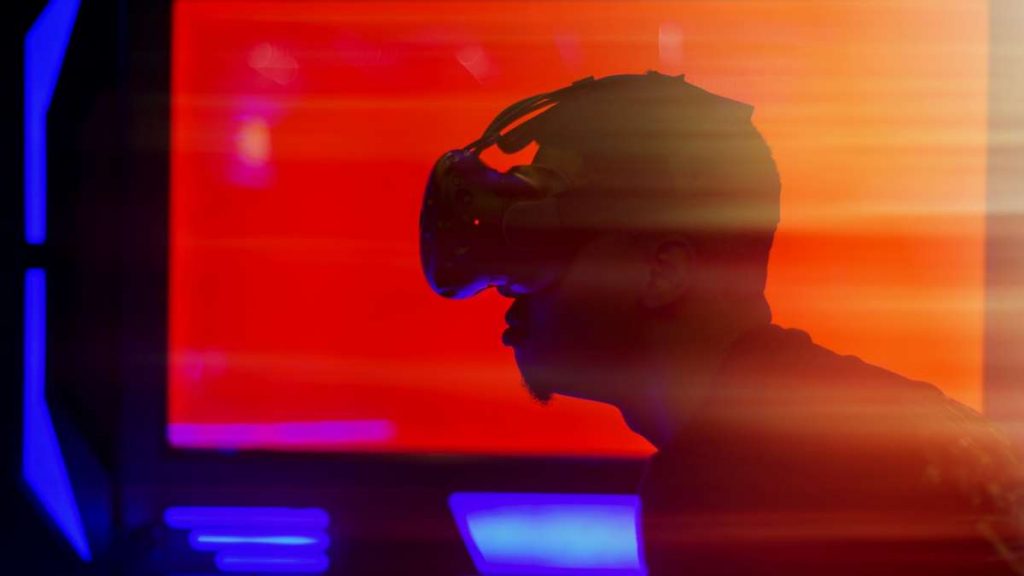Virtual reality (VR) gaming is still a relatively new phenomenon within the world of video games, and not every platform has begun investing in what is widely regarded as a promising and innovative technology. What does this mean for the future of VR gaming? Will it be the case that Sony dominates the market with PlayStation VR or will VR-ready gaming PCs be the norm for those who want to immerse themselves in their games?
To predict what the future of VR gaming holds, we need to know what challenges will need to be overcome, where we might see innovation and when we will see change.
What are the challenges?
Virtual reality motion sickness
One of the main challenges faced by VR developers is that the technology can cause users to feel nauseous, also known as virtual reality motion sickness. Even a slight sensory mismatch between moving your head and the delay in the action being completed on your VR headset can cause dizziness, nausea and more. For the immersive exploration experiences that VR gaming will supposedly bring, anything that reminds us that it’s not real will put people off and limit innovation and growth.
This means that before VR can become the everyday technology that many gamers and enthusiasts want it to be, the developers need to make VR headsets that don’t cause unpleasant side effects for users.
Clunky headsets
VR headsets are clunky, heavy and awkward. This makes people feel less interested in the technology because they’ll feel like it’s less immersive, or that it’s not something that they can do without a lot of effort to set it up correctly. If headsets were easier to put on or didn’t necessarily make you look like you’d just rolled out of bed when you removed them, they would be more popular and those who owned them would use them more. This means more VR games would be being played and more investment would be made into making games for VR rather than investing in the technology.
Lack of games
The future of VR gaming lies in the games people will play, but for many people there aren’t enough games for a VR headset to be worth the investment. Half-Life: Alyx is considered the only true AAA VR game, and other games are often smaller in scope and story. In comparison to other games, the variety of games that is available is often considered to be lacking, and gamers will find other places to invest their money and time.
Cost of Entry
VR is supposedly just around the corner from huge changes, amazing advances and incredible innovation. This means that many consumers aren’t sure when to buy their first headset, as there might be a better, cheaper one released just after they’ve bought theirs. Once the development of VR technology and games allows for users to invest with less worry about having wasted money if they’d just waited, VR gaming will become more popular and may even be seen in every household.
Where will the innovation come from?
Sony
While Microsoft has never seemed to invest in VR gaming for its Xbox consoles, Sony was one of the first to release VR headsets, which were compatible with the PlayStation 4. They’ve also said that the PlayStation 5, which is compatible with the current PSVR headset through an adaptor, will get its own VR hardware at some point in the near future. This, coupled with the inclusion of VR games in the PlayStation Plus services, suggests that Sony could be one of the leading companies when it comes to the future of VR and VR gaming.
Sony have said that their plans for VR for the PlayStation 5 include developing and improving the haptic feedback for the controllers and a motion-sickness resistant headset, solving some of the challenges we discussed earlier.
Facebook bought Oculus in 2014, and has since begun investing in VR gaming. The Oculus headsets are both standalone and compatible with computers, so PC gamers can also play VR games, as well as those more interested in a smaller-scale experience without being hampered by wires or attached to a computer. The Oculus Rift and the Oculus Quest series of headsets are among the most popular and versatile headsets, allowing people to play wherever and whenever they want.
When will we see change?
Ben Kuchera once said, “VR has been five minutes away from some kind of breakthrough for about eight years.” While we may not know exactly when VR will become the mainstream way to game that experts say it will be, it is accepted that the future of gaming is linked to developments in VR.
The future of VR gaming is shown in part through the statistics. The global VR market is predicted to grow to be worth over $69 billion by 2028, showing that the future is bright. It also shows that people are expected to begin investing more in VR as the technology becomes cheaper and more easily available over the next few years. This won’t just be limited to gaming, but to the other applications of VR in education, training and industry.
Will VR take over gaming?
VR gaming has many challenges to overcome before it can become the predominant type of gaming, from the cost of entry to solving issues like VR motion sickness. However, thanks to advances like the Oculus Quest 2, which has a starting price of just $299, VR gaming and headsets will become more commonplace. However, while they might become more common to see and use, the gaming industry as a whole is worth over $170 billion dollars, so VR gaming will be one small section of that. In the future, when VR is more similar to the Holodecks of Star Trek, we may see VR gaming as the predominant type of gaming, but at least for the near future, VR gaming will become more popular, but not the most popular type of gaming.
